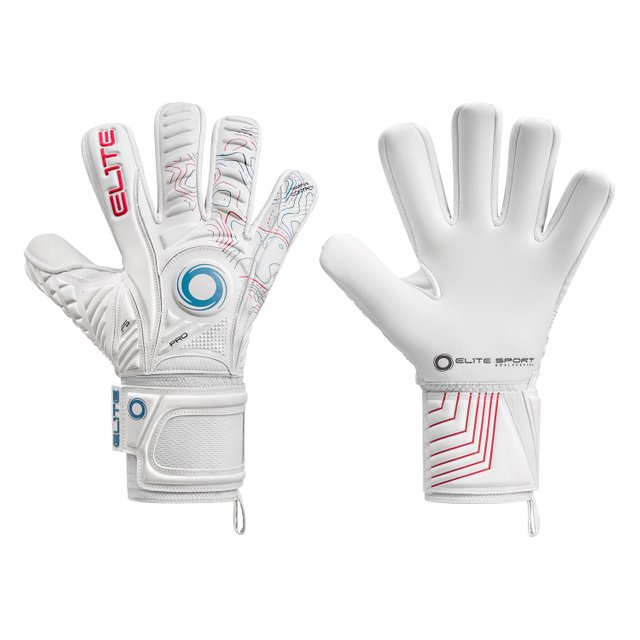Elite Pulsar Goalkeeper Gloves: Precision, Grip, and Comfort for Champions
A complete, practical guide for serious shot-stoppers who want reliable control, protection, and comfort in every match situation.
Introduction: Why Your Gloves Decide the Big Moments
In goalkeeping, small margins create big outcomes. From fingertip parries to commanding high crosses, the tools you wear influence your timing, feel, and decision-making. High-quality gloves steady your technique, protect your hands, and reinforce consistency when pressure spikes. This guide focuses on construction details, fit principles, care routines, and performance habits that help you turn difficult saves into routine ones.
Great gloves won’t replace positioning or reading the play, but they can amplify both. A balanced palm compound, a supportive wrist closure, and a secure cut improve how the ball settles in your hands. That translates to stronger claims, cleaner catches, and calmer distribution that settles your back line and sparks counters.
The reason keepers keep returning to elite pulsar goalkeeper gloves is simple: dependable grip under pressure. In wet matches, late in games, or during rapid save-to-save sequences, stability matters. Palms engineered for tack plus an ergonomic backhand help you hold firm, punch cleanly, and redirect shots with authority without adding bulk or stiffness.
When you first try elite pulsar goalkeeper gloves, notice how the palm compound marries friction with feel. The latex formulation bites the ball without being overly gummy, so you get secure handling and a truer sense of spin. That balance reduces rebounds on firm strikes and builds trust in your first contact.

Beyond the palm, elite pulsar goalkeeper gloves emphasize fit and protection. A wrapped thumb, supportive wrist strap, and anatomically contoured fingers keep the glove stable through dives and collisions. Optional finger supports guard against hyperextension while keeping enough flex for quick parries and controlled punches.
Grip Science: What Makes Contact Consistent
Latex density, cell structure, and surface texture shape how a glove grips in different scenarios. A slightly softer top layer boosts initial tack for clean takes, while an underlayer provides resilience for training wear. Micro-textures on the palm can channel moisture so the contact patch stays effective when the ball is slick.
Tip: “Activate” new latex with a gentle pre-wash in lukewarm water and allow it to air dry. Before kickoff, lightly dampen the palms; this wakes up the latex and improves touch without oversaturating the surface.
Cut & Fit: Get the Shape That Matches Your Hands
Fit is performance. A negative cut offers a tight, minimalist feel for keepers who want fingertip precision. A roll-finger cut wraps latex around the fingers for a larger contact zone and a slightly cushier catch. Hybrid cuts blend these traits, offering articulated control with a bigger sweet spot.
Check these fit cues: no pinching in the webbing, no rolling at the fingertips, a wrist closure that locks the glove without restricting blood flow. When you close your hand, the backhand should flex without crumpling; when you spread your fingers, the seams should remain calm and flat.
Backhand, Wrist, and Impact Protection
A breathable but structured backhand stabilizes punches and shields knuckles on traffic claims. Reinforced zones on the backhand distribute force on contact, while a supportive wrist strap prevents mid-dive slippage. If you choose finger support spines, make sure they bend forward smoothly so catching mechanics stay natural.
All-Weather Performance: Rain, Heat, and Artificial Turf
In rain, keep a towel handy to manage surface water, rotate a second pair for warmups, and maintain a light palm dampness—never soaked. In heat, look for breathable meshes and perforations that vent warm air without softening structure. On artificial turf, expect more abrasion; plan your training-pair rotation to protect your match-pair latex.
Care Routine: Make Performance Last
- After every session, rinse palms gently in cool water to remove dust and grit.
- Air dry away from direct sun or heaters; excess heat fatigues latex and adhesives.
- Store flat in a breathable bag; avoid compressing palms against rough surfaces.
- Reserve a match pair and a training pair; rotate to extend usable tack.
Consistency is your competitive edge. A simple routine keeps grip predictable and saves your hands from preventable slips or hot spots.
Training Habits That Unlock the Gloves’ Potential
Rehearse first contact: high balls, low scoops, and driven shots. Emphasize quiet hands—meet the ball early, absorb pace through your elbows, and marry catch shape with footwork angles. Your gloves become an extension of clean technique when you repeat sound habits under realistic pressure.